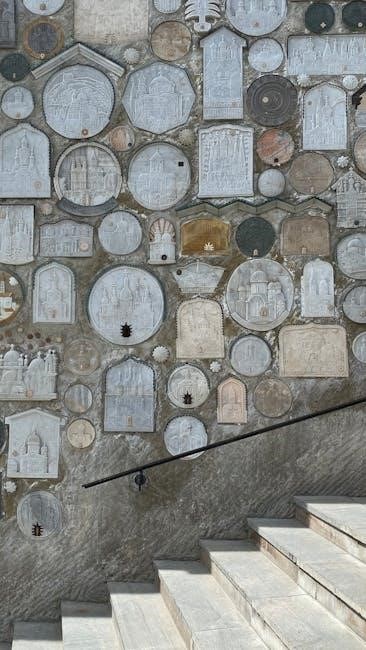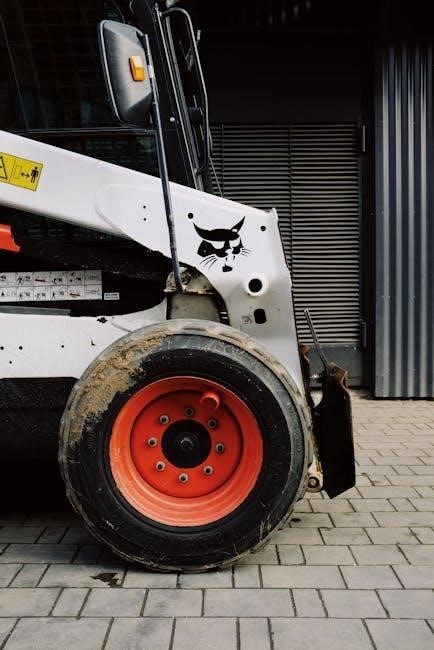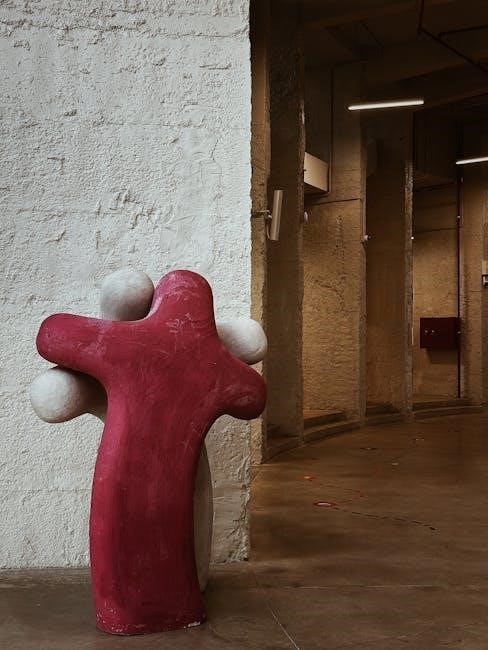fibre cement sheet installation guide

Fibre cement sheets are durable, versatile building materials made from cement, sand, and cellulose fibres. They are widely used for walls, roofs, and ceilings due to their weather-resistance and low maintenance requirements.
1.1 What Are Fibre Cement Sheets?
Fibre cement sheets are construction materials made from cement, water, and cellulose fibres. They are durable, fire-resistant, and suitable for various applications, including walls, ceilings, and roofs; Their composition provides strength and versatility, making them ideal for both indoor and outdoor use in residential and commercial settings.
1;2 Benefits of Using Fibre Cement Sheets
Fibre cement sheets offer durability, weather resistance, and low maintenance. They are fire-resistant, pest-proof, and can withstand harsh conditions. Their versatility allows use in walls, ceilings, and roofs. They are cost-effective and provide a long-lasting solution for various construction needs, making them a popular choice for both residential and commercial projects.
Safety Precautions for Installation
Ensure proper safety measures, including wearing PPE like masks and gloves. Handle sheets carefully to avoid injuries and work in well-ventilated areas to prevent dust inhalation;
2.1 Personal Protective Equipment (PPE)
Wearing appropriate PPE is essential for safe fibre cement sheet installation. This includes dust masks to prevent inhalation of fibres, gloves to protect hands from abrasions, safety goggles for eye protection, and sturdy footwear to prevent injuries. Ensure all equipment fits properly and is used consistently throughout the installation process to minimize health and safety risks effectively.
2.2 Handling and Storage Safety
Handle fibre cement sheets with care to avoid damage and injury. Use proper lifting techniques or mechanical aids to prevent strain and sheet breakage. Store sheets in a dry, well-ventilated area, keeping them flat and secure to avoid warping. Avoid stacking excessively high to prevent collapse. Ensure sheets are protected from weather and moisture during storage to maintain their integrity and performance.
Tools and Materials Required

Essential tools include power saws, drills, and measuring tapes. Materials like fasteners, sealants, and adhesives are crucial for secure and durable fibre cement sheet installation.
3.1 Essential Tools for Installation
The installation of fibre cement sheets requires specific tools, including circular saws, drills, utility knives, measuring tapes, levels, screwdrivers, and impact wrenches. Protective gear like gloves and goggles is also necessary for safety.
3.2 Materials Needed for the Project
The essential materials include fibre cement sheets, galvanized or stainless steel fasteners, weatherproof sealants, and adhesives. Additional materials like wooden battens for framing, insulation materials, and waterproofing membranes may be required depending on the project scope and environmental conditions.
Preparing the Site
Ensure the work area is clear of debris and obstructions. Check for structural integrity and level the ground if necessary. Prepare surfaces to ensure even installation and stability.
4.1 Clearing the Work Area
Clearing the work area is essential for safe and efficient installation. Remove debris, inspect for structural damage, and mark boundaries. Organize tools and materials, ensuring easy access. Level uneven surfaces and clean the area thoroughly to prevent issues during installation.
4.2 Checking for Structural Integrity
Ensure the structure can support the weight of fibre cement sheets by inspecting for cracks and damage. Verify load-bearing capacities and foundation stability. Address any weaknesses to prevent collapse and ensure safety. Professional assessment is recommended for uncertain structures to guarantee reliability and durability.

Measuring and Cutting Fibre Cement Sheets
Measuring fibre cement sheets ensures proper fit. Use a diamond blade saw for precise cutting. Always wear PPE to avoid inhaling dust during the process.
5.1 Accurate Measurement Techniques
Accurate measurements are crucial for proper installation. Use a tape measure to record dimensions precisely. Mark cutting lines clearly with a pencil and straightedge. Double-check measurements to avoid errors and material waste.
5.2 Safe Cutting Methods
To safely cut fibre cement sheets, use a diamond-tipped saw or a carbide-tipped tool. Always wear PPE, including a dust mask, gloves, and safety goggles. Cut in a well-ventilated area to avoid inhaling dust. Use steady, controlled movements to prevent accidents and ensure clean cuts.

Installing Fibre Cement Sheets
Installation involves preparing the site, measuring, cutting, and securely fastening sheets to walls, roofs, or ceilings. Ensure proper alignment, spacing, and sealing for a durable finish.
6.1 Wall Installation Process
Begin by preparing the wall surface, ensuring it is clean and level. Apply a suitable adhesive to the back of the fibre cement sheet and align it with the wall studs. Secure the sheet using anchor screws, spacing them evenly to prevent damage. Ensure proper sealing at joints and edges for a weather-tight finish. Finish by painting or sealing the surface for added protection and aesthetics.
6.2 Roof Installation Process
Start by ensuring the roof structure is secure and clear of debris. Lay a suitable underlayment for weatherproofing. Cut fibre cement sheets to size, allowing for expansion gaps. Secure sheets with compatible fasteners, spaced evenly to avoid damage. Ensure edges and joints are sealed properly for a watertight finish. Apply a protective coating if required for enhanced durability and weather resistance.
6.3 Ceiling Installation Process
Begin by ensuring the ceiling area is clear and structurally sound. Measure and cut fibre cement sheets to fit, leaving slight expansion gaps. Secure sheets to ceiling joists using appropriate fasteners, spaced evenly for stability. Ensure edges and joints are sealed to maintain integrity. Apply a protective coating if desired for added durability and aesthetic appeal.

Fastening Methods
Fastening methods are crucial for securing fibre cement sheets, ensuring stability and durability. Selecting the right materials and techniques is essential for preventing damage and ensuring longevity.

7.1 Choosing the Right Fasteners
Choosing the right fasteners is critical for fibre cement sheet installation. Use durable materials like galvanized or stainless steel screws to prevent rust and ensure longevity. Ensure fasteners are compatible with the sheet thickness and type to avoid damage. Proper fastener selection enhances structural integrity and prevents issues like loosening over time. Always follow manufacturer recommendations for optimal results.
7.2 Proper Fastening Techniques
Proper fastening techniques are essential for secure fibre cement sheet installation. Ensure screws are driven straight and evenly spaced. Avoid over-tightening to prevent cracking. Fasten along the sheet edges and supports, maintaining recommended spacing. Use washers for added protection. Proper alignment and torque ensure a stable structure and prevent future issues like loosening or water infiltration. Always follow installation guidelines for best results.
Sealing Joints and Gaps
Sealing joints and gaps is crucial for preventing water infiltration and ensuring structural integrity. Use weatherproof sealants or silicone-based products to create airtight and watertight connections between fibre cement sheets.
8.1 Importance of Proper Sealing
Proper sealing of joints and gaps is essential to prevent water damage, air leaks, and pest infestation. It ensures airtight connections, protecting the structure from environmental factors like moisture and pests, while maintaining long-term structural integrity and durability.
8.2 Recommended Sealants and Methods
Use high-quality silicone or polyurethane-based sealants for fibre cement sheets. Apply sealant evenly along joints and gaps using a caulking gun. Ensure surfaces are clean and dry before application. Smooth the sealant with a damp cloth or tool for proper adhesion. This method ensures long-lasting protection against moisture and weathering, maintaining the structure’s integrity and appearance.

Finishing Touches
Lightly sand fibre cement sheets for a smooth finish. Apply primer before painting to enhance paint adhesion. Perform final inspections and touch-ups to ensure a polished appearance.
9.1 Painting and Coating

Painting and coating fibre cement sheets enhances their appearance and durability. Clean the surface thoroughly before applying a high-quality primer. Use acrylic or latex-based paints for optimal results. Ensure proper adhesion by following manufacturer guidelines. Regular recoating helps maintain the material’s protective properties and aesthetic appeal over time.
9.2 Final Inspection and Touch-Ups
After installation, inspect fibre cement sheets for cracks, gaps, or uneven surfaces. Ensure all fasteners are secure and edges are properly sealed; Address any imperfections by filling gaps or replacing damaged sections. Touch-up painting may be needed to blend repaired areas with the rest of the installation, ensuring a seamless and professional finish.
Maintenance and Care

Regularly clean fibre cement sheets to remove dirt and mildew. Inspect for cracks or damage and repair promptly. Reapply sealants as needed to maintain durability and appearance.
10.1 Regular Maintenance Tips
Perform routine inspections to detect cracks or damage early. Clean fibre cement sheets with a mild detergent and water to prevent dirt buildup. Avoid harsh chemicals that may degrade the material. Trim nearby vegetation to reduce moisture retention. Ensure proper ventilation to prevent mould growth. Regularly check and replace worn-out sealants around edges and joints.
10.2 Cleaning and Repair
Clean fibre cement sheets with a soft brush or sponge using mild detergents. Avoid abrasive materials to prevent scratching. For repairs, fill cracks with a compatible sealant and allow to dry. Sand lightly before painting. Address water damage promptly by replacing affected sheets. Regular upkeep ensures longevity and maintains the material’s integrity and appearance effectively over time.

Common Mistakes to Avoid
Common installation errors include improper fastening, insufficient sealing, and incorrect cutting techniques. These mistakes can lead to structural weaknesses and water damage, compromising durability and safety.
11.1 Installation Errors
Installation errors often stem from improper fastening, misalignment, and inadequate sealing. Over-tightening fasteners can damage sheets, while under-tightening leads to loose panels. Misaligned sheets cause uneven surfaces and weaken structures. Improper sealing of joints invites water infiltration, leading to damage and safety hazards. These errors underscore the importance of precise installation techniques and adherence to guidelines to ensure durability and safety.
11.2 Post-Installation Issues
Post-installation issues include cracking, warping, and water damage. Cracks may arise from structural stress or improper handling. Warping occurs due to uneven drying or exposure to extreme temperatures. Water damage results from inadequate sealing or poor maintenance. Addressing these issues promptly is crucial to maintain the integrity and longevity of fibre cement installations, ensuring they remain safe and visually appealing.
Frequently Asked Questions (FAQs)
Fibre cement sheets are durable, fire-resistant, and low-maintenance. Common questions include their lifespan, installation costs, and suitability for various climates. These topics are addressed in detail within this guide.
12.1 General Installation Queries
Common questions about fibre cement installation include material durability, cost, and weather resistance. Homeowners often inquire about tools needed, surface preparation, and fastening methods. Others ask about joint sealing and finishing techniques. These queries are essential for ensuring a successful and long-lasting installation process. Addressing them helps avoid common mistakes and enhances overall satisfaction with the project.
12.2 Troubleshooting Common Problems
Common issues during installation include cracks, uneven surfaces, and water seepage. These can often be resolved by ensuring proper sealing of joints and using the right fasteners. Addressing these problems early prevents structural damage and extends the lifespan of the fibre cement sheets. Regular maintenance and inspections are key to identifying and fixing issues promptly.
Fibre cement sheets offer durability and versatility for various applications. For further guidance, consult manufacturer manuals, industry standards, and online tutorials to ensure optimal installation and maintenance practices.
13.1 Summary of Key Points
Fibre cement sheets are a durable, low-maintenance option for walls, roofs, and ceilings. Proper installation requires safety precautions, accurate measurements, and secure fastening. Regular maintenance ensures longevity, while sealing joints prevents damage. Always follow manufacturer guidelines and safety protocols for optimal results and to avoid common installation mistakes.
13.2 Recommended Resources for Further Reading
For further guidance, consult manufacturer installation guides, such as those from James Hardie or Etex. Industry standards like ASTM and resources from the International Association of Certified Home Inspectors (InterNACHI) provide detailed insights. Additional tutorials and technical specifications can be found on YouTube and manufacturer websites, ensuring comprehensive understanding and compliance with best practices.



Leave a Reply
You must be logged in to post a comment.